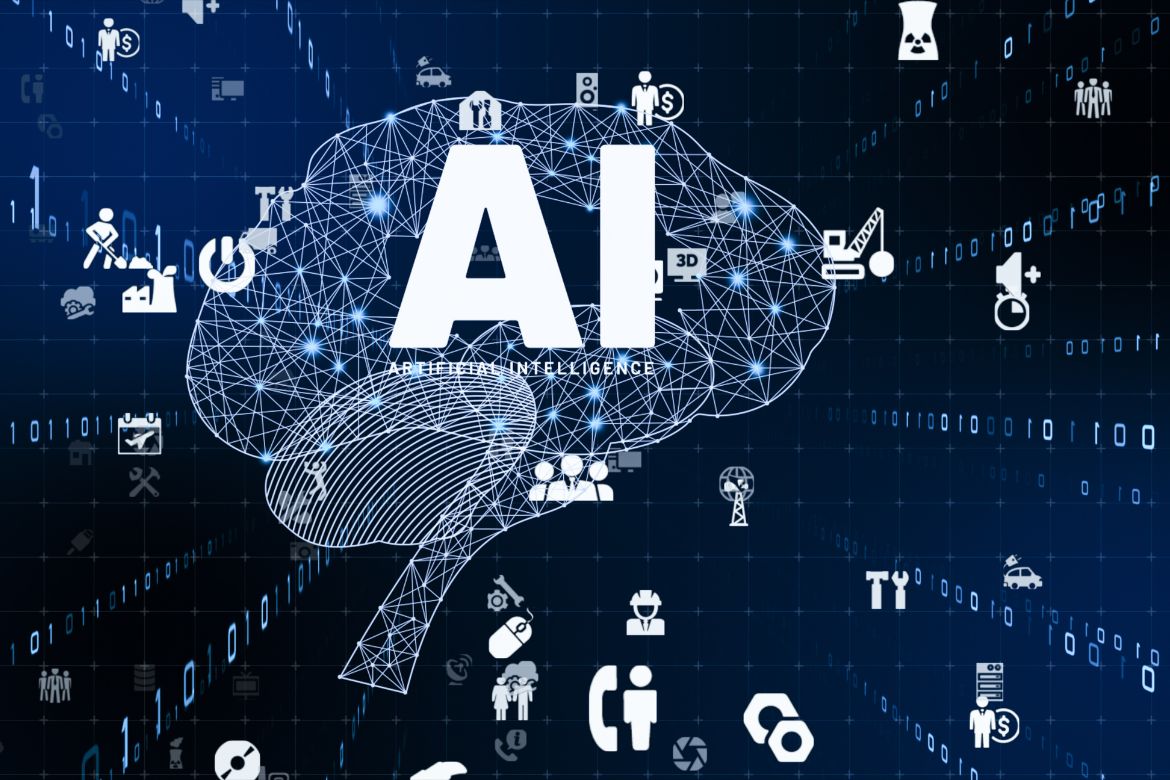AI in the U.S.: The market, trends & consumer expectations
Written by
Kinga EdwardsPublished on
Discover how AI transforms the U.S. Explore trends, innovations, and the future of artificial intelligence in everyday life.

It powers your search results and drafts your emails. It recommends your next purchase and slowly weaves itself into the systems behind how you work, shop, and live. What are we talking about? AI in the U.S., and globally.
In 2025, the U.S. AI market is growing faster than anyone predicted. Investors are moving billions. Consumers are adjusting. And regulators are finally stepping in. But what do people really think? Where’s the money going? And which trends are shaping how Americans use, expect, and trust AI?
Let’s break it down!
What’s the deal with AI in the U.S. right now?
The AI in the U.S. market is absolutely booming. In 2025, analysts estimate it’s currently worth $173.56 billion, and in 2034, it should reach about $851.46 billion, with a CAGR of 19.33%, from 2025 to 2034. Thus, it’s safe to say we’re in a high-stakes sprint, with deep learning as the biggest segment (36.55% of the U.S. AI market in 2024).
Big tech giants are going all in. Amazon, Microsoft, Alphabet, and Meta plan to pony up around $320 billion in AI infrastructure this year—Amazon alone is fronting $100 billion. That underscores how seriously they’re taking compute, data centers, and model training.
There’s also a bit of government action. In January, a new public–private setup dubbed “Stargate LLC” was launched by OpenAI, SoftBank, Oracle, and MGX, with about $100 billion committed now and a massive $500 billion pipeline through 2029. Plus, there are discussions about Congress allocating at least $32 billion over the next three years to the development of AI in the U.S. and the introduction of security measures related to this technology.
Industries adopting AI in the U.S.? Everywhere.
- By solution, the segment that dominates is services, which are at around 39.52%.
- When it comes to technology, deep learning wins. It holds a market share of approximately 36.55%.
- By end use, BFSI (banking, financial services, and insurance) holds the top spot at 16.92%, based on 2024 numbers.
You’re hearing about AI in healthcare, education, retail, fintech… it’s creeping into nearly every corner of business. But let’s focus more on technology itself.
We know that Deep Learning takes the lead, but there are also Machine Learning, NLP, and Machine Vision. Their market share is accordingly 26.89%, 20.31%, and 16.25%.
Going further, the generative AI is now in a league of its own. The global Gen AI spending is expected to reach $644 billion this year, jumping a whopping 76.4% over last year. Companies are reporting 15–30% gains in productivity, or even up to 90% in analyzing and generating insights.
As you can see, the market is growing at a breakneck pace, businesses are investing substantial capital, and policies are shifting to support the next phase. How do people feel about it?
People are into it, but also kinda confused
Americans are buzzing about AI, but there’s also a fair bit of “uh, what’s going on?” Trust is a mixed bag. A Pew survey found 56% of experts are upbeat on AI’s future, but only 17% of the general public agrees.
Public worry is real. In a wide-ranging US poll, 63% of consumers identified bias and discrimination as the primary concerns with AI algorithms. Similarly, 74% of CX leaders worry about transparency, and so do almost 75% of CEOs.
Yet, 83% of CX leaders expect self-service interactions to increase 5x thanks to AI!
See? People see the benefits.
Moreover, in e‑commerce, 38% appreciate AI for personalized product suggestions, and 31% say it speeds things up. About 34% would even let AI make purchases for them. On investing, the national average willingness to entrust AI is $20,000, with states like California averaging $46,000. Even with these numbers, only 17% would let AI take over major money moves.
So people trust AI… but with guardrails.
Age, gender, background all play roles. Pew data shows 63% of men see AI having a positive impact vs 36% of women. Another study using crowd-sourced metaphors noted that Americans are increasingly seeing AI as “warm and competent”, perceptions up 34–41% over the last year.
And across domains – news, jobs, elections – skepticism stays high. Only 10% feel AI will improve elections or news quality. In financial matters, 31% are okay letting AI choose stocks, but only 15% are cool with letting it rebalance their 401(k).
So here’s the portrait: people see AI in the U.S. in this way: better service, more personalized experiences, smarter investing – but they hedge. They want control, transparency, and regulation. They’re wary of bias, privacy issues, and misinformation. Trust is tentative and conditional.
Where’s the money going?
VCs are investing substantial amounts of money in the U.S. AI startups. In Q1 2025, investors poured in $80 billion, which is roughly 71% of total global venture funding (largely thanks to mega-deals like OpenAI’s $40 billion raise). Monthly, AI startups saw about $5.7 billion in funding on average, covering 22% of all VC deals in January 2025.
Private AI investment hit $109 billion in 2024, dwarfing China and the UK by factors of 12 and 24, respectively.
Notable rounds this year include Databricks raising $10 billion (Series J) and Anthropic securing $3.5 billion. Meanwhile, Scale AI made waves with its $1 billion Series F and new deal with Meta, boosting its value to around $18 billion.
Late‑stage rounds dominate. Around 79 deals over $100 million closed in Q1, although fewer than in the previous quarter. There were also 5 AI deals that raised $8.6 billion.
Global AI startup exits are on pace, with projections showing roughly 3,008 exits totaling $237 billion in 2025. Crunchbase notes that without the OpenAI mega‑round, global VC funding would’ve stayed flat in Q1.
Infrastructure is also in focus. CoreWeave went public in March 2025, raising $1.5 billion, the largest AI‑related IPO of the year.
AI in the U.S. and everyday life: what do people want?
In retail, 59% of online shoppers feel AI will improve their shopping experience. Nearly all (about 91%) expect personalized recommendations powered by AI over the next two years.
AI is already taking over customer interactions: 95% of customer service touchpoints are predicted to be AI-driven targets by 2025, and 80% of service orgs plan to adopt generative AI. Retailers agree: 76% say they’ll increase AI investment in the next year to automate support and boost productivity.
Even though 34% of consumers would let AI make purchases for them, some people want to remain in control — still privacy remains a big concern. Over 50% worry about data mishandling, and 28% don’t trust businesses with their info.
In physical stores, there’s potential too. The retail‑AI market last year hit $11.6 billion, with a projected CAGR of 23% through 2030. Nearly 60% of purchases are still influenced by digital trends, and NRF forecasts AI agents ramping up digital-of-store roles in 2025.
On personalization:
- Netflix earns $1 billion annually from AI-driven content recommendations, and the concept of hyper-personalization is increasingly mainstream.
- Zendesk says that 61% of consumers expect more personalized services.
- McKinsey surveys note that consumers are tightening budgets while still looking for personalized experiences. 47% wait for sales before apparel purchases even though discretionary spending remains stable.
So yes, people like AI’s perks: better recommendations, faster service – but trust is earned, privacy is vital, and autonomy still matters.
Four trends to watch this year (and next)
Trend 1: AI agents and copilots flying high
AI agents are stepping up and doing the work. You’ll see them writing emails, summarizing meetings, creating reports, even taking action on your behalf. In tools you already use, they’re becoming built-in copilots: always on, learning how you work, and adapting to your habits without asking for much in return.
It’s subtle, but powerful—and it’s changing how we think about productivity.
We’re crossing the line from AI as a helper to AI as a collaborator. Businesses will shift how they structure roles, automate workflows, and train people to work with machines, not just around them.
That changes everything, from job descriptions to hiring priorities to how tools are built.
Trend 2: Hyper‑personalization is mainstream
AI has made personalization smarter and more invisible. What used to be “Hey [First Name]” in an email is now fully customized content, product suggestions, and messages that adapt to how you browse, click, and buy. And people are starting to expect it.
If something feels generic, it feels, well, off. The smarter the system, the more natural the experience.
As more businesses compete for attention, personalization becomes the filter that decides who wins and who gets ignored. In the future, every product, app, and service will need to feel like it “knows” you – but without being creepy.
This balance between helpful and invasive is the real challenge ahead.
Trend 3: Regulation & ethical waves
The laws are still catching up. For AI in the U.S., there’s a growing push to create guardrails: around how AI is trained, how it’s used, and what companies need to disclose. At the same time, ethical questions are stacking up.
Who owns the output of an AI? What happens when it’s wrong? What if it causes harm?
What comes next will define AI’s future. Strong, clear rules could build public trust and encourage safer innovation. But if regulation lags too far behind, the risks (bias, misinformation, privacy breaches) will become harder to fix.
Getting this right is the difference between sustainable progress and a public pushback that stalls everything.
Trend 4: AI in education & job reskilling
AI in the U.S. is becoming a quiet force. It’s helping students learn at their own pace, automating admin tasks for teachers, and turning training into something more interactive and personalized. For workers, it’s becoming a bridge to new skills. It can give instant feedback, help with code, content, and analysis.
Why does this matter long-term? Because AI can reshape these areas.
People won’t need to learn everything, but they’ll need to learn how to work alongside these systems. As you can imagine, the future belongs to those who can adapt, stay curious, and use AI to extend their capabilities.
Bonus: Security & voice AI – the unexpected wild cards
Cybersecurity just shot up the AI agenda. A global Arctic Wolf report reveals for the first time that AI and LLMs are the top concern for security leaders, outranking ransomware by a wide margin. Around 45% of cybersecurity pros admit they don’t feel ready for AI-powered threats.
To respond, defenders are fighting back with AI-enhanced systems: 95% agree that AI improves threat detection and response efficiency, and 88% believe it frees up teams to act faster.
So, voice AI is a double-edged sword: high reward, but also high risk. Brands and security teams are racing to adapt and build safeguards for trust and privacy.
Artificial intelligence in the U.S.: Are you ready for what’s coming?
Artificial intelligence in the U.S. is happening. The market is growing fast, businesses are betting big, and consumers are adjusting to this new normal. People want smarter tools and more personalized experience but without losing privacy or control.
Trust is still being built. The tech is moving faster than the rules.
As AI agents become your coworkers, shopping assistants, and tutors, the expectations will only grow.
Companies that get it right (on transparency, security, and usefulness) are the ones people will stick with.
So yes, the future’s AI-powered. But it’s still very much in our hands.
***


